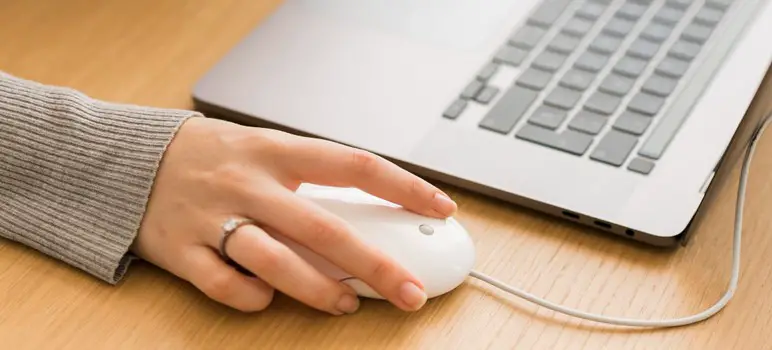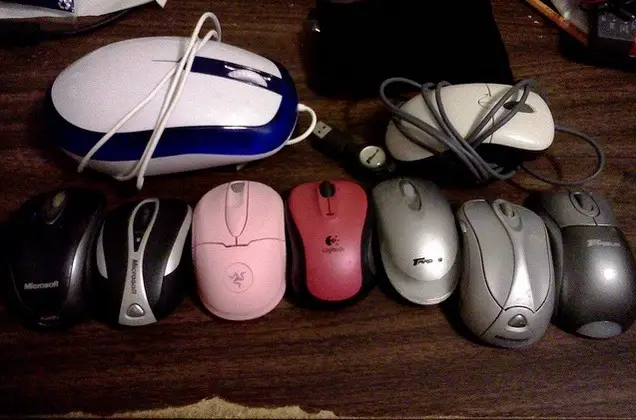A computer mouse is a great tool when it’s working properly. However, when it malfunctions, it can be a real headache. Luckily, most computer mouse issues are simple and can easily be resolved if you know what to do.
Here are some common computer mouse problems along with simple fixes for them.
Check These Likely Causes Out First Before Proceeding With Anything Further
If using a wireless mouse, it could be possible that the battery is getting weak. This can cause a variety of malfunctions which can affect mouse performance. Change the battery to see if this fixes the issue.
Also, give the bottom of the mouse and mouse pad a quick cleaning to remove any dirt or debris that may be interfering with performance.
With either wired or wireless models, try unplugging and re-plugging to see if this fixes things.
If none of these solutions or any combination of them works, then proceed to these other possible computer mouse issues and solutions.
Read also: Common Computer and Tech Issues You Can Resolve Yourself
1. Movement of Mouse Cursor is Not Smooth
This is likely due to dust in the sensor area of the mouse or on the surface on which the mouse is placed.
Use a clean micro fiber cloth to clean the surface, without using chemicals or other harsh cleansers. Then proceed to clean the surface where the mouse is used.
If you happen to be using a surface such as a table or desk which has a glossy finish, this may interfere with how the mouse works. This is especially true in laser and optical mice.
Glass may cause issues as well. If using the mouse on these glossy surfaces, try using a mouse pad instead, or any other mouse pad alternatives to see if this resolves the issue.
Read also: Why is My Mouse Lagging?

2. Frozen Mouse Pointer
Check if your wired mouse is properly connected to your computer, or try plugging it into another USB port. If you’re using a wireless mouse, make sure its batteries are full.
When a mouse pointer freezes up, this can many times be because several applications are running in the background of the computer that you may not even be aware of. Check the Central Processor Unit, or CPU, to see what programs and applications you are currently running.
If the computer mouse has simply frozen once, sometimes just waiting for several seconds may resolve the issue without doing anything further. If the problem persists, then check the bottom right corner of your desktop to see what programs may be running. Closing unnecessary programs can many times restore proper function to the mouse.
If this does not resolve the problem, turn your computer off and restart it in order to get rid of any troublesome programs and applications that may have been lurking in the background.
3. Mouse is Just Not Working
A non functioning computer mouse could be the result of either software or hardware related issues. Possible causes could be a loose connection, bad wiring, faulty USB or PS/2 port, or a bad IR wireless receiver.
Check out your ports with another device to make sure they are working properly. Also, some mice, either wireless or wired, require drivers to be installed in order to work properly. Make sure the driver is installed and up to date.
If none of these steps get you up and running again, try the old standby of turning off your machine and re-starting it to see if this solves the problem.
4. Too Fast or Too Slow
If your pointer is performing too fast or too slow, try going into the control panel, then to the mouse option, then to the pointer options tab. You will then be able to change the speed to a level that feels more comfortable to you.
After making these adjustments, your computer mouse’s pointer will most likely moving at a normal speed again and your problem solved.
5. Double-Clicking Issues
Mouse double-clicking is frequently triggered by the accumulation of dust inside the mouse. To resolve this issue, try using compressed air to blow away the dust that has gathered around and under the mouse’s buttons.
Additionally, a defective mouse can also be a common cause of double-clicking. This occurs when the mouse circuit board malfunctions and registers a single click as a double click. If this is the case, consider either having your mouse repaired or purchasing a new one.
Mouse double-clicking could be due to a software configuration issue as well. This can be resolved by going to the control panel, then mouse option, then buttons tab. Here you can change the speed level of the double click feature to a setting that works best for you.
Read also: Is The Era of Computer Mouse Coming to An End?
6. Unresponsive Buttons
Unresponsive buttons on a computer mouse can happen due to various reasons.
Dust and debris buildup around the buttons can lead to decreased responsiveness or clicks not registering. Frequent use can cause physical wear and tear on the buttons, making them stick or become unresponsive. Loose connections within the mouse, such as wiring or connectors, can also result in intermittent button issues. Outdated or corrupted mouse drivers and conflicting software can interfere with button responsiveness.
To resolve unresponsive button issues, start by cleaning the computer mouse to remove dust and debris. Use compressed air or a cotton swab with alcohol for effective cleaning. Inspect the buttons for physical damage and consider repair or replacement if necessary. For wired mice, ensure a secure connection, and for wireless mice, check the battery. Update mouse drivers from the manufacturer’s website and troubleshoot conflicting software by disabling unnecessary background applications.
You can perform a computer mouse test to check if your mouse is still having unresponsive buttons issues. If the issue persists, consider contacting the manufacturer or getting a new mouse.
Conclusion
If all of these common solutions to common problems fail to resolve your computer mouse issues, the next likely move is to replace the mouse. For whatever reason, the mouse may simply be irreparable. Luckily, there are many different styles of mice in both wired and wireless options, so you should be able to replace it relatively inexpensively. You may even wish to pick up a very inexpensive model just to make sure it really is your mouse malfunctioning instead of some other computer related issues.
FAQs
How do I know if my mouse is faulty?
If you’re experiencing issues with your computer mouse, it might be faulty. Here are some signs to look out for: Erratic cursor movement, Unresponsive mouse buttons, Double-clicking issue and Connection problems. Try connecting the mouse to another computer to see if the issues persist. If they do, your mouse is likely faulty, and you should consider repairing or replacing it.
Why is my mouse always malfunctioning?
Several reasons can cause frequent mouse malfunctions: Dust and debris buildup, Outdated driver issues, Electromagnetic interference and Physical damage caused by dropping or mishandling.
Why is my mouse acting weird?
A few factors can cause your mouse to behave unusually such as: Surface reflection, Low battery (Wireless mouse), Mouse sensitivity settings and Software conflicts. Try using the mouse on a different surface, replace the batteries in wireless mice, adjust sensitivity settings, and close unnecessary background applications to troubleshoot the issue. If the problem persists, consider cleaning the mouse or checking for software conflicts.

